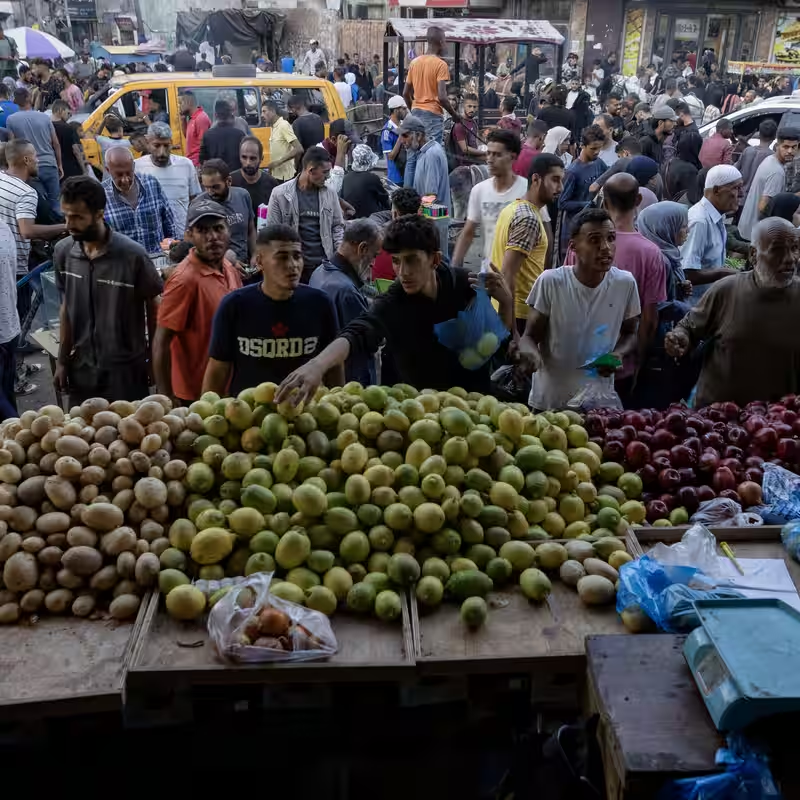Gaza Aid Situation: More Trucks, Less Relief
In the two weeks since the cease-fire took hold in Gaza, hundreds of trucks have rolled across the border daily—bringing food, fuel, medicine, and even soda. On the surface, it looks like recovery is underway. But dig deeper, and a troubling reality emerges: most of what’s entering Gaza isn’t aid—it’s commercial goods that ordinary families simply can’t afford.
While international aid groups and foreign governments have ramped up deliveries, relief workers and residents say the majority of the 600+ daily trucks are filled with items destined for private markets, not humanitarian distribution centers.
“Everything Entered for Traders—Not for Us”
“Most of the trucks are of a commercial nature,” said Bahaa Zaqout, spokesman for the Palestinian Agricultural Relief Committee. “After two years of war, most Gazans are unable to purchase items from the markets. The prices are still very expensive.”
Rami Abu Moleg, a 45-year-old former taxi driver, shared a bittersweet moment: his family ate chicken for the first time in eight months—only because his brother-in-law paid for it. Though chicken prices have dropped from $33 to $12 per pound since the truce, that’s still far beyond the reach of most households.
“This is still expensive for me,” Abu Moleg told The New York Times. “Everything in the market entered Gaza for the traders. It was not aid.”
Aid vs. Commerce: The Dangerous Imbalance
According to U.N. data, humanitarian aid trucks have never exceeded 200 per day during the cease-fire—even on days when over 780 total trucks entered Gaza. The rest? Commercial shipments carrying biscuits, chocolate, soft drinks, and other non-essential goods.
“We need lifesaving items,” Zaqout emphasized. “Not soda and sweets.”
Shaina Low of the Norwegian Refugee Council warned that while reviving Gaza’s private sector is important, “commercial goods should not come in at the expense of aid or in lieu of aid.” She stressed that malnourished populations need protein, fruits, and vegetables—not empty-calorie luxuries.
Aid Efforts Are Expanding—But Still Falling Short
Since the October 10 cease-fire, UNICEF has doubled its daily aid pallets. The World Food Program now delivers 750 metric tons of food per day—though its target is 2,000 tons. The U.N. has set up 20 new nutrition centers and distributed over one million hot meals daily, plus therapeutic food for more than 1,200 severely malnourished children.
Yet critical gaps remain. Clean water is still scarce. While 140 water tanks and thousands of jerrycans have been delivered, Gaza’s shattered water and sewage infrastructure needs generators, pipes, chemicals, and construction materials—items Israel continues to restrict, citing security concerns.
Bureaucratic Barriers Block Lifesaving Supplies
Adding to the crisis, Israel’s new aid registration system requires humanitarian groups to disclose the identities of their Gazan staff—a move Israel says prevents Hamas infiltration, but which many NGOs refuse, fearing for their employees’ safety.
Since the truce began, 41 major aid organizations—including Doctors Without Borders and Oxfam—have had 99 aid requests denied, leaving roughly $50 million worth of tents, food, and hygiene kits stranded outside Gaza.
“We have the capacity to bring in higher volumes of aid,” said Tess Ingram of UNICEF. “It is not enough.”




